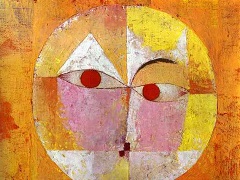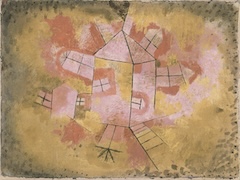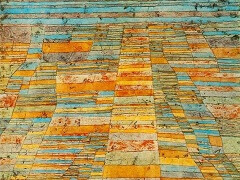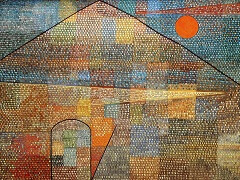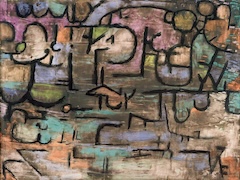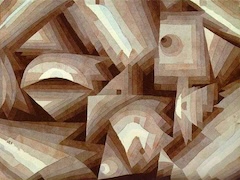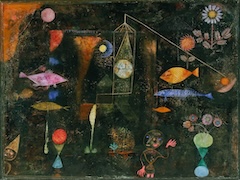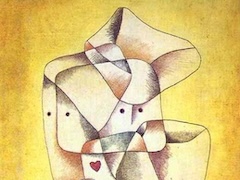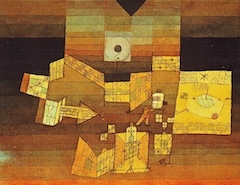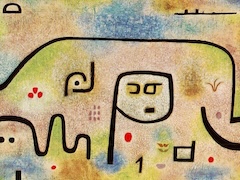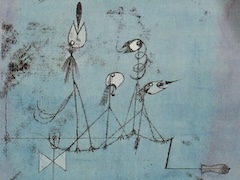A Young Lady's Adventure, 1922, by Paul Klee
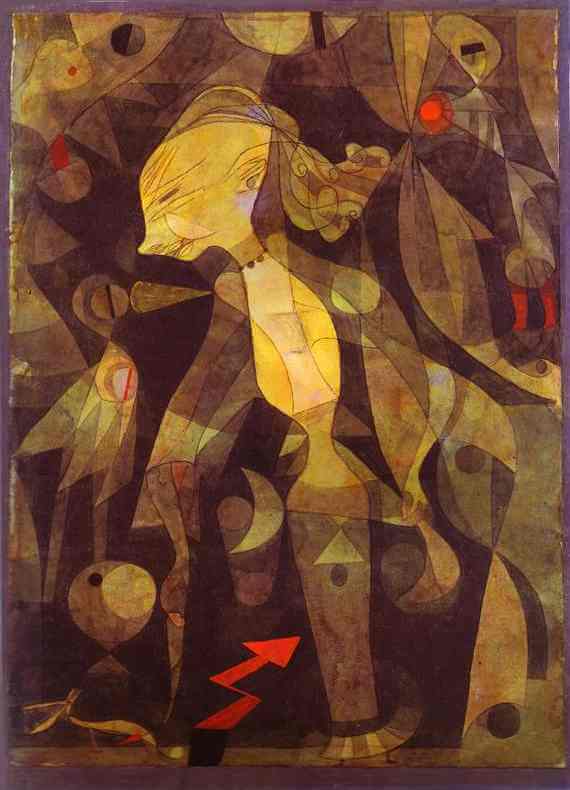
Commentators have differed in their interpretation of this watercolour. The German critic Will Grohmann, for example, saw the figure as a 'fashionable lady, who is spite of her striking elegance is more or less helpless in face of the oppressive spirits'. In the Bauhaus where Klee taught in this period the work was known, he said, as 'The English Miss'. Others emphasise the erotic connotations of the imagery, and Klee's use of arrows as phallic symbols. For Christain Geelhaar the Young Lady's Adventure referred to in the title is sexual in nature.

